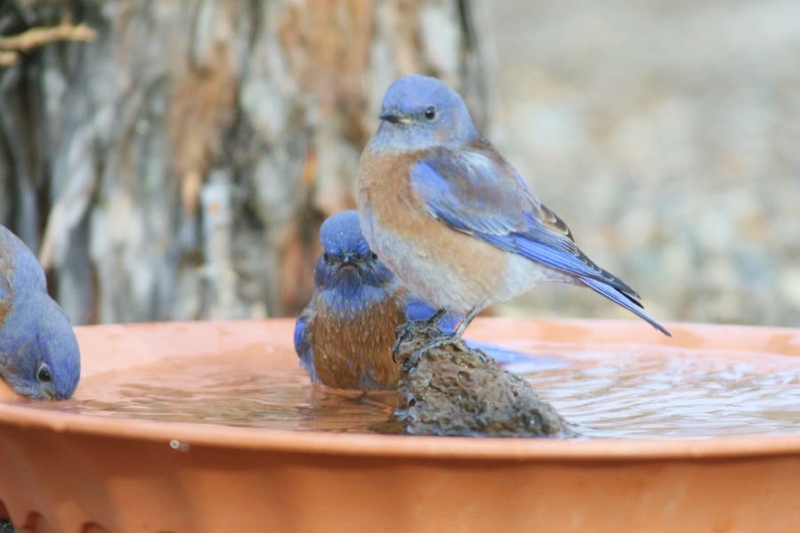Water:A Powerful Attraction
By Dave Hanks
Animal bodies (as do ours) contain a high percentage of water. It’s no wonder that the competition for it is sometimes fierce. Because of this, some of the best photography places are in arid regions that have a single watering spot that draws all available species to it.
Such is the Lava Beds National Monument in the far north end of California. There is no surface water there, and that used in its campground has to be pumped from underground up 1000 feet. The birds there are starved for water and will flock to any that’s available.
We had driven a long, long day and a half to the Tule Lakes National Wildlife Refuge. It was November, and the days were beautiful. The refuge is reputed to have large numbers of Bald Eagles and Snow Geese in winter. However, hunting season had put all the waterfowl way out in the lakes – too far to photograph. We did photograph one Bald Eagle, but the promised birds were non-existent.
Discouraged, we headed south to the lava beds to camp. The area had had a fire and, combined with all the lava rock, looked very bleak. It looked like another “wipeout.” We chose a campsite that seemed to have a few birds around it. Upon investigation, Carolyn found that they were coming to a grating, by a water hydrant, which they could reach their beaks through to slake their thirst.
She put out a large pan of water and it was an immediate success. Finches, Waxwings, Towhees, and especially the resident thrushes (Robins, Townsend’s Solitaires, and Western Bluebirds) came flocking to the pan. To their joy, they not only found water to drink, but water to bathe in. It was gratifying to watch the excitement that the birds exhibited at experiencing such a vital need for their existence!
(Western Bluebirds making use of the water pan)
|
